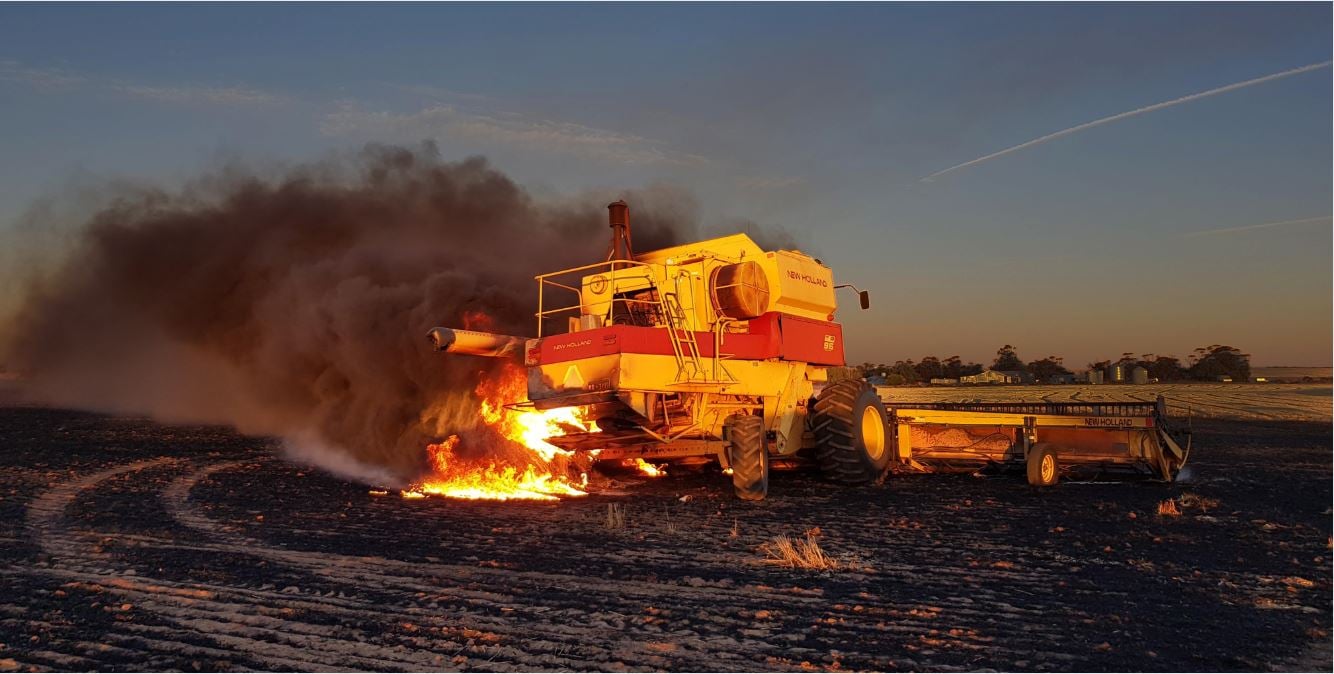That harvest season comes around the same time as bushfire season is nothing short of ironic. Every summer, there is a potential for harvest fires occurring as a result of headers bursting into flames. Thankfully, there are a number of things you can do to get on top of the situation before it gets on top of you, including utilising farm fire fighting units.
Below are a few things to bear in mind.
Keeping Your Farm a Safer Workplace
Poor hygiene can be blamed for harvesters catching fire. According to previous news, 1,000 harvesters catch fire every year. One percent of which (an average of 12 harvesters according to research), worth approximately $500,000 each, completely burn down to the ground.
You might think 1% is insignificant but remember that fire doesn’t wait to fully consume a harvester before it can start feasting on crops and spread to neighbouring paddocks.
So what do you do?
1. Prevent dust build-up on your harvester
Dust build-up is a huge fire risk. Flammable material accumulating on heat-producing components of your harvester (i.e. engine bay, belts, chains, exhaust system, etc.) can ignite, so keep them clean and dust free. Dust, like the ones from crops that are affected by fungal disease are said to be particularly problematic, highly flammable, and the primary cause of header fires.
Consistently check areas where dust naturally builds up. Consider using heat-resistant paint on hot parts like turbo chargers and exhaust manifolds. This allows for a smoother surface that prevents dust from accumulating. Blow down your machine regularly or whenever the chaser bin is full—more often (every 30 minutes), if your machine doesn’t have an automated engine blowdown system.
Be extra meticulous about your harvester’s hygiene during windy, hot, and dry days.
2. Avoid or postpone harvest during high fire-risk days
Hot weather equals extremely hot engine. This, in combination with flammable dust material from your crops, could turn out to be the perfect recipe to start a flame. High fire-risk days are described to be low humidity with high wind speed and vulnerable plant/crop state.
Also, bear in mind to keep bearings and other gears lubricated properly to prevent too much heat build-up.
3. Follow safe fuelling practices
DO:
- Shut the engine off before refuelling.
- Allow adequate time (about 15 minutes) for hot engines to cool before refuelling.
- Put out open flames and other smoking substances/materials prior to refuelling.
DON’T:
- Fuel equipment while the engine is still running.
- Put combustible liquids in non-approved containers.
4. Check wirings and connectors to avoid sparks
Repair or replace worn-out wirings promptly as these could ignite in the presence of dust and vapours.
5. Make use of a handheld infrared thermometer
This device is a whole lot cheaper than suffering the consequences of fire and enables you to check for hot parts while maintaining a safe distance.
6. Look for other possible ways that fire could start
Do you have greasy/oily rags lying around? Keep them covered in metal containers to prevent spontaneous combustion. Look for signs of fluids leaking and repair promptly if any.
7. Place a fire fighting unit on the paddock you’re working on
Investing in a fire fighting unit is highly recommended by agricultural engineers. Whenever your harvester catches fire, you need to take quick action to mitigate it. There’s no quicker way to do that than with a reliable portable fire fighting unit on standby. These portable fire fighting units are also easy to move across different paddocks and convenient for fast fill-ups from different locations.
Putting Farm Fire Fighting Units to Good Use During Harvest Season
-
Make sure your fire fighting unit is well-maintained and fully-operational.
-
Ensure it’s capable of carrying at least 250-litres of water.
-
Put it on standby in the same paddock where you’re currently harvesting so you can access it immediately in case of an incident.
-
Before anything else, make sure every capable adult in your property knows how to operate the equipment.
Consider printing and laminating a page of instruction. Place it on a spot on your firefighting equipment where anyone can see it easily so they can study and later on review how to run the system. Keep the instructions brief and easily understood. -
Have a fire drill that revolves around what you would do when a fire breaks out during harvest.
Murphy’s law states that, “if you give things a chance to go wrong, they will." So don’t give preventable causes of fire (like dust on headers) a chance!










What do you think about this post?
Comments